Sushi has become synonymous with Japanese food, but there is really so much more to Japanese cuisine than sushi. Having the opportunity to share a meal with a Japanese family should be seen as a privilege.
Furthermore, being able to eat an authentic Japanese meal in Japan is a true treat. As with any country, there are some staples you will often see in a Japanese meal, including:
- Rice or Noodles
- Soy Sauce
- Tofu or other soy-based foods, such as edamame
- Vegetables or fruits
- Seafood
- Green tea
Apart from these foods, there are certain dishes you might see often on a Japanese menu or on the dining table in a Japanese home. Many of these dishes include some of the staples listed above.
Soba
Soba is a noodle dish, made with thick noodles that are formed from a combination of buckwheat and wheat flour.
The noodles are cooked, and are either served in the broth they are cooked in, or drained and served hot or cold. The noodles are usually served with a sauce and are enjoyed as a nice snack or small meal.
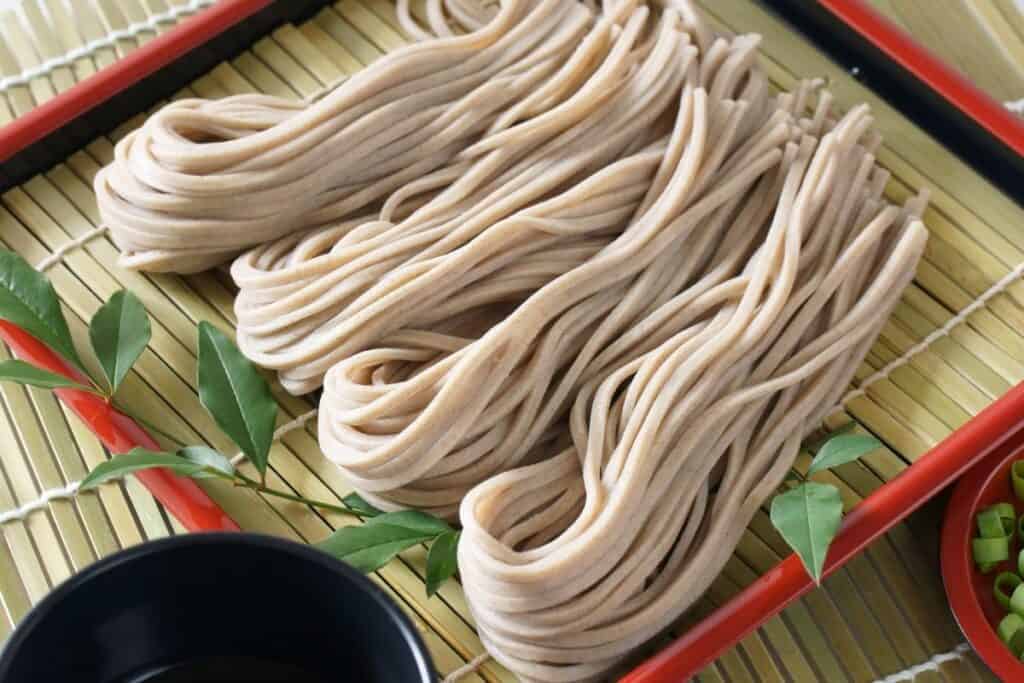
Ramen
Most of us know what ramen is, but what you might not know is that authentic Japanese ramen is very specific. Much of the ramen we might enjoy in countries other than Japan has been changed from the original recipe.
That being said, you will also see ramen executed in different ways in Japan.
Traditional ramen will have a broth base, with thin noodles, miso or soy-based sauce, pork, and eggs.
Vegetables are often added as well to get some more nutrition in the dish, and it may also be garnished with a variety of ingredients like green onion or seaweed.
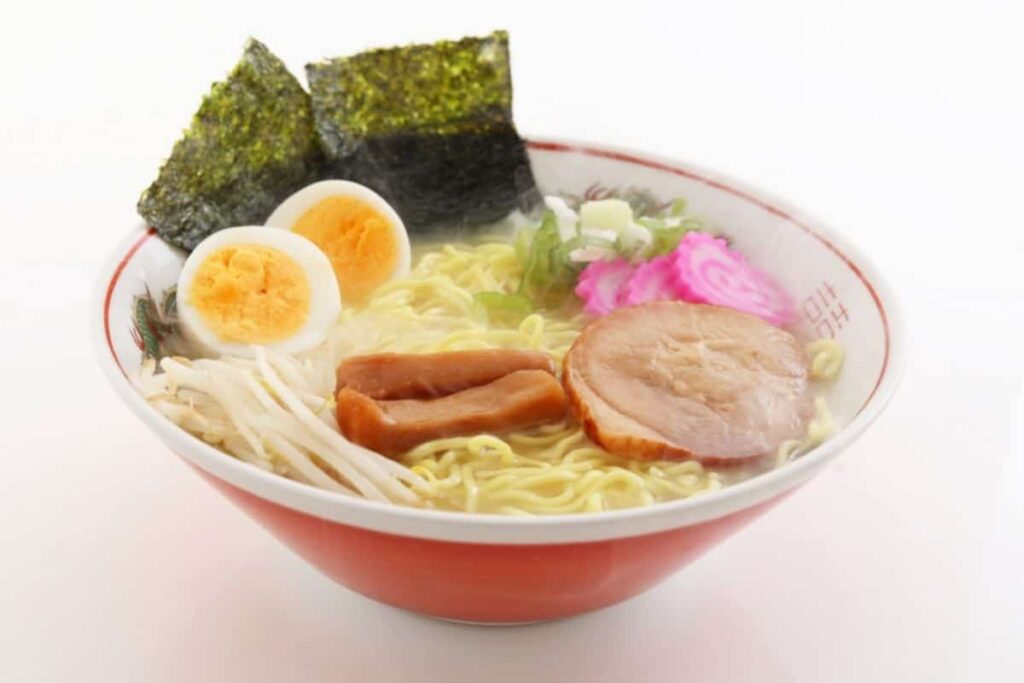
Onigiri
An onigiri is a Japanese rice ball. It is a very inexpensive snack that you will find all throughout Japan. It consists of a ball of rice wrapped in nori seaweed. Sometimes, there are fillings in an onigiri such as pickled fruit, salmon, or bonito.
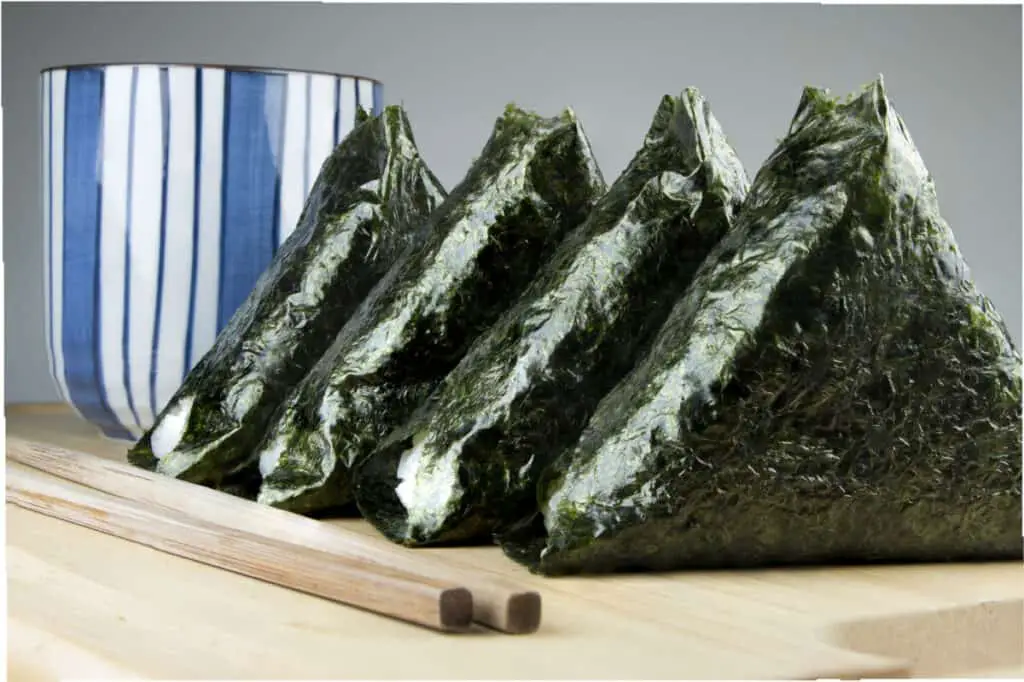
Yakizakana
Yakizakana is a generic term for a grilled fish dish. However, this Japanese dish typically consists of grilling the entire fish before eating it. Some of the fish used most often in yakizakana are salmon, saba, sea bream, or mackerel pike.
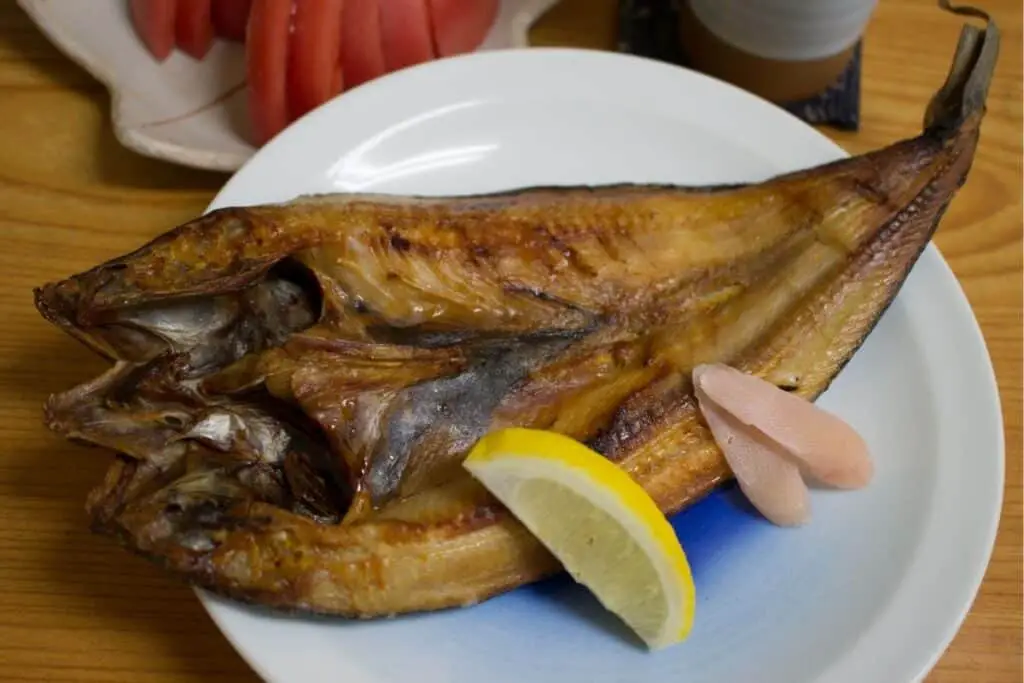
Sukiyaki
Sukiyaki is best enjoyed in a reputable restaurant in Japan, as the dish has raw egg in it. In Japan, there are a lot of very stringent rules regarding how eggs are handled, in order to be able to consume them raw.
This dish will have you adding noodles to a hot broth, as well as your choice of vegetables, meat, or tofu. Once your components are done, you dip them into raw egg. It might sound unusual, but it is really delicious.
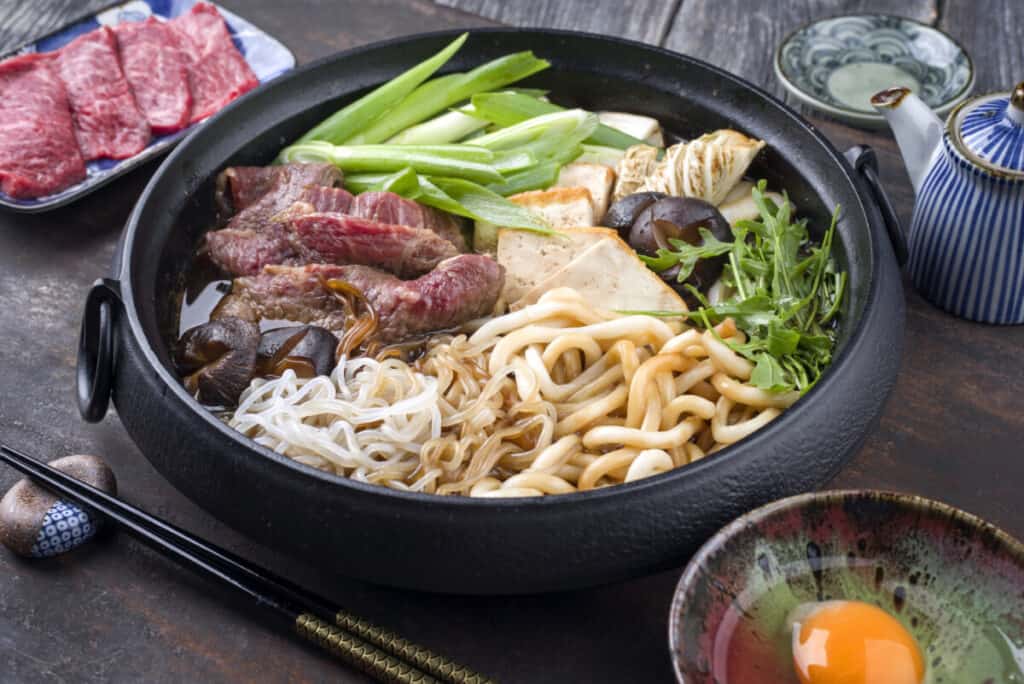
Yakitori
Yakitori is a very popular dish in Japan, and it can often be found at food trucks or food stands. It consists of grilled chicken pieces stuck onto a skewer, then dipped in sauce and topped with items such as scallions or sesame seeds.
In a yakitori shop in Japan, you are actually able to view the chef preparing your skewer as they will open up the kitchen for patrons viewing.
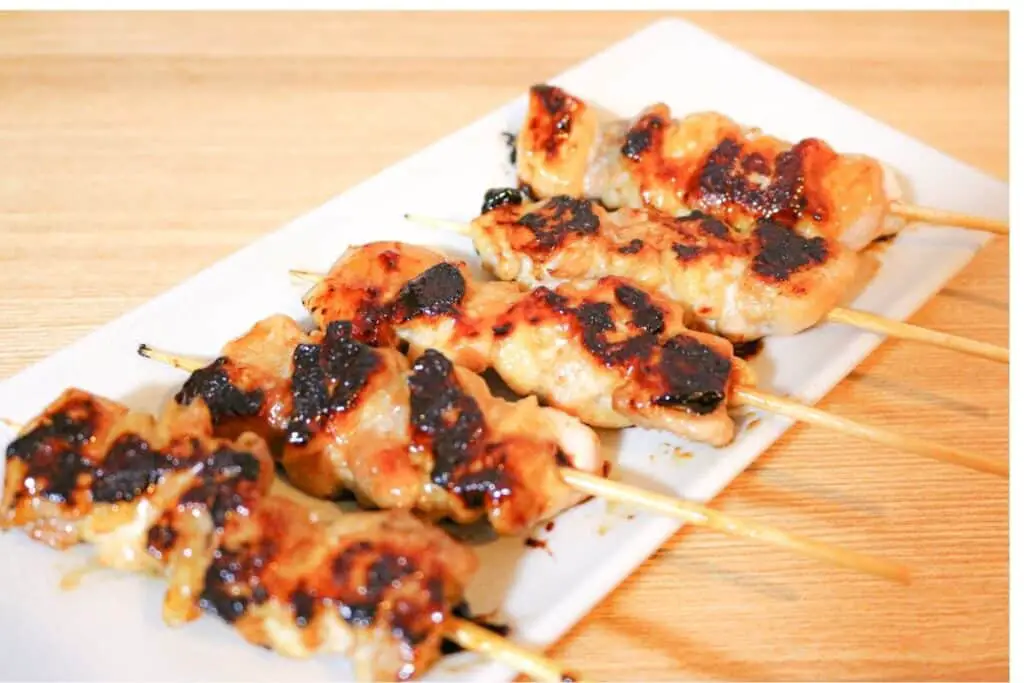
Kayu
Kayu is very similar to porridge but is made with a base of rice cooked in hot water very slowly. It is sometimes served with pickled fruit or just eaten as is.
While it is a fairly bland dish, it is usually eaten when someone is not feeling well, similar to how Westerners eat chicken noodle soup.
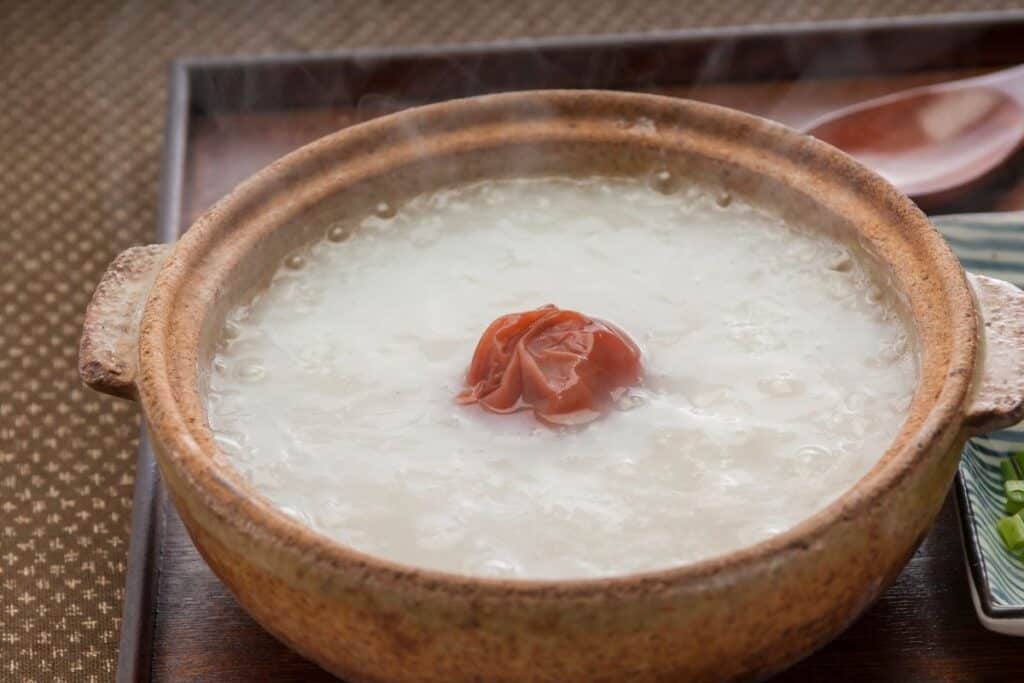
Donburi
Donburi is another rice dish that is enjoyed quite often in Japan. It is essentially rice served with some kind of meat and eggs. The meat is typically chicken or pork, but it is most popularly enjoyed with katsudon on top.
Katsudon is a breaded pork cutlet that is cooked in a simmering broth with onions and egg. You will be hard-pressed not to find donburi on a Japanese menu.
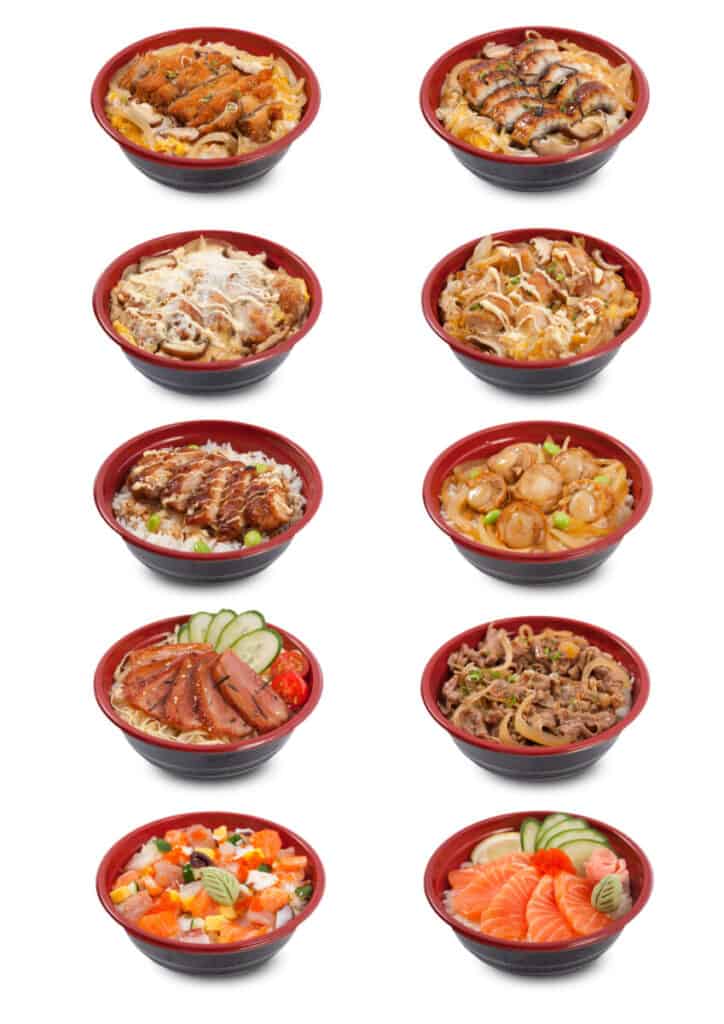
Curry Rice
Curry rice is a simple dish that is easy to cook and assemble, making for an easy and balanced meal. Curry rice will be made with sticky rice, and the curry sauce is not especially spicy.
The brown sauce tends to be sweeter than traditional Indian curry.
The sticky rice will usually be topped with a generous helping of brown sauce, which will usually have vegetables such as carrots or potatoes mixed in.
It is also often topped with sliced meat, such as chicken or pork, or katsu, which is a breaded pork cutlet.
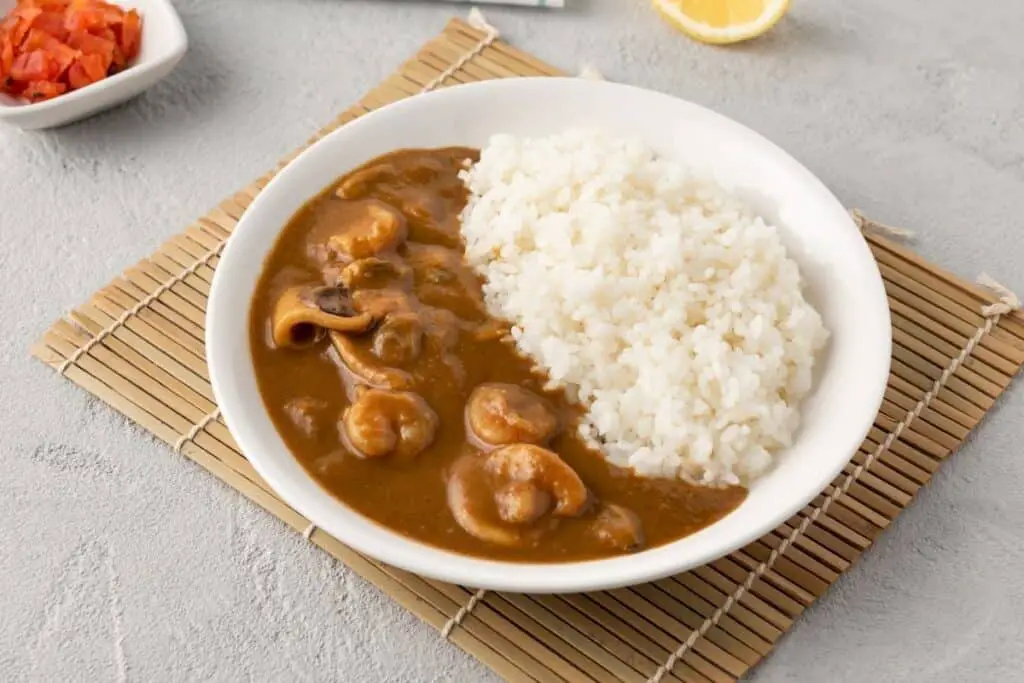
Udon
Udon is a popular Japanese dish that has been interpreted in different ways around the world. In Japan, udon is a noodle dish that is often compared to ramen, but the noodles are different.
The thick noodles are placed in a broth, and different vegetables can be added. Udon can be served either hot or cold.
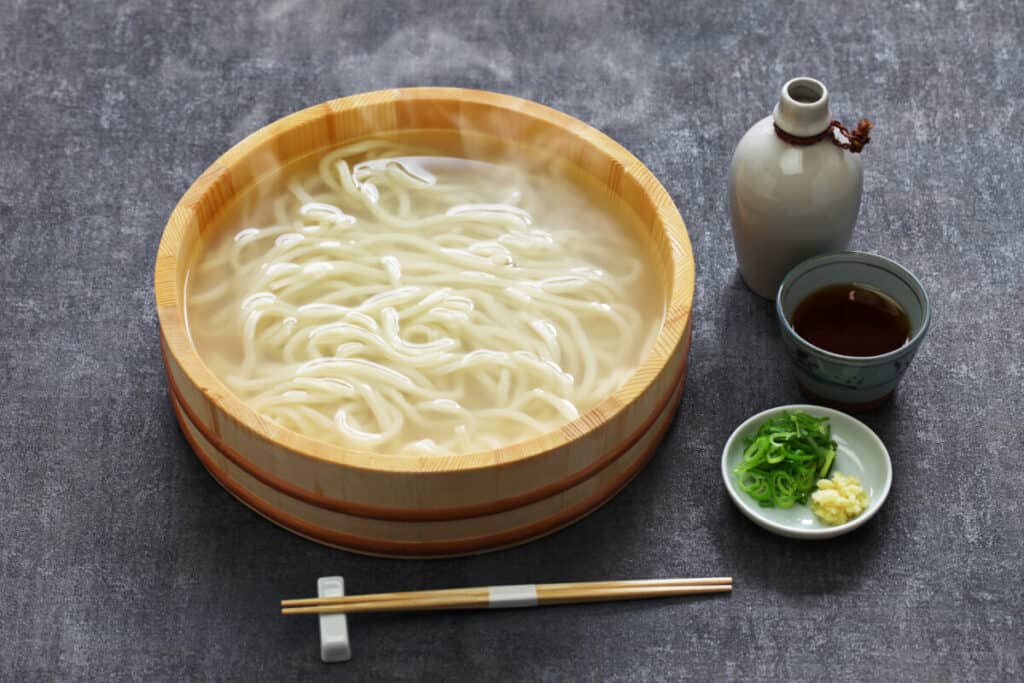
Yaki Niku
Yaki niku is more than just a meal; it’s an experience and one that you must try if you are ever in Japan. Yaki niku roughly translates to grilled meat, and you are typically served a spread of different types of meat that you can grill yourself at the table.
There will also usually be rice, noodles, and sauces that accompany the meat to get a more balanced meal. It’s a lot of fun to enjoy this meal with some close friends or family.
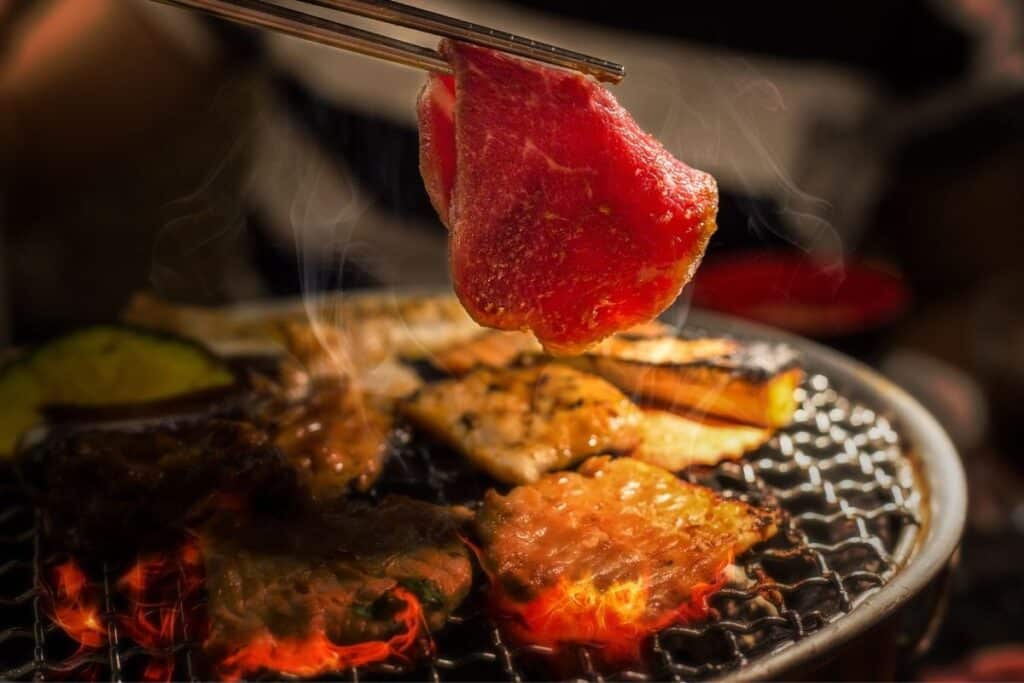
Nabe
Nabe is a delicious and nutritious bowl that is typically shared with family in Japan. Often, a hot plate will be placed in the middle of the table and ingredients will be added to it in a particular order.
The finished nabe dish will be similar to a soup.
The base starts off with some kind of broth, and the rest can be added based on your preference. The nabe will usually have noodles, as well as a combination of meats and/or tofu.
Different vegetables are also added to result in a balanced meal that is filling and full of goodness.
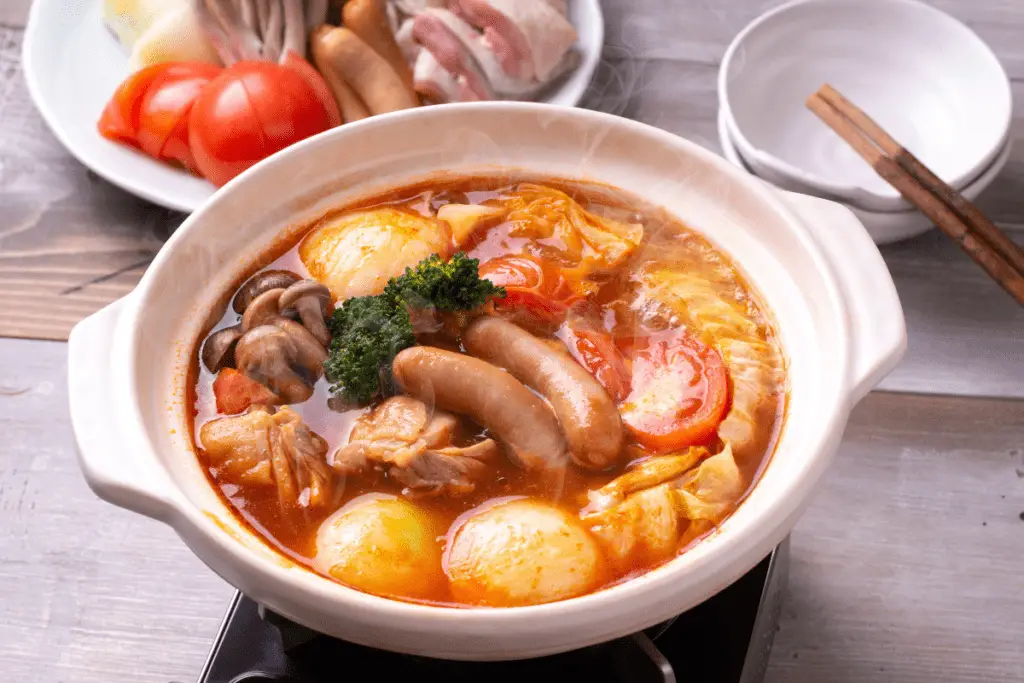
Rice Bowls
A rice bowl in Japan is a dish often served at breakfast. The rice can be served with a variety of toppings or sauces, including soy sauce or fermented soy beans, also known as natto. Rice bowls are also sometimes served with raw eggs.
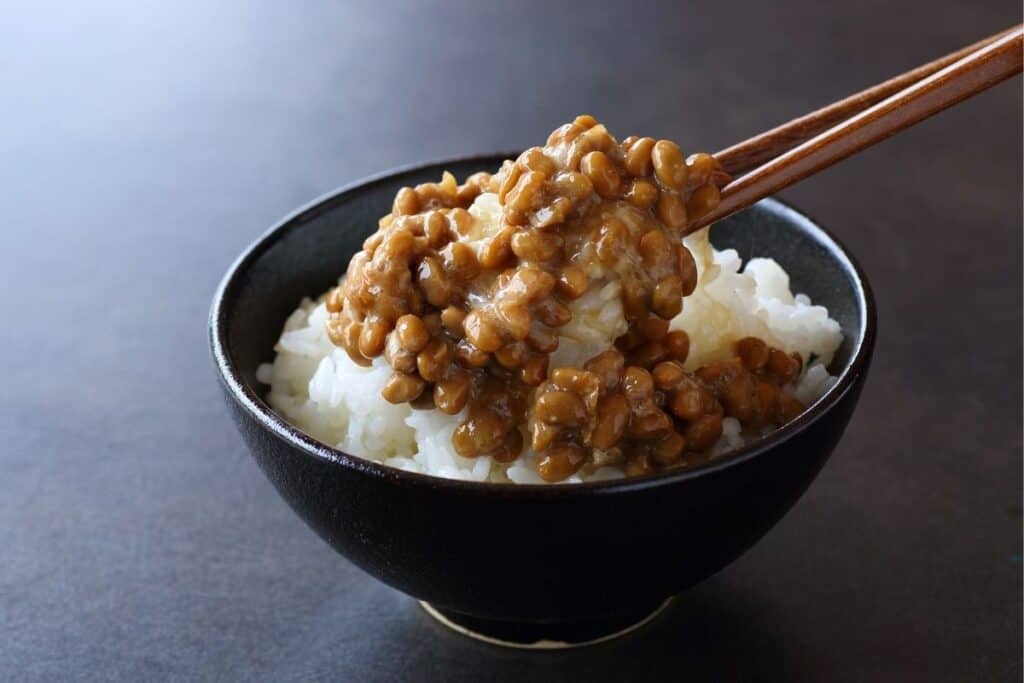
Hambagu
Hambagu is kind of like meatloaf, but with a Japanese spin on the popular Western dish. Since fish is such a prominent component of many Japanese dishes, hambagu is a nice change.
It is essentially a ball or loaf of ground meat and is sometimes stuffed with a filling, such as cheese, rice, or vegetables.
It is also often topped with a sauce which can be composed of a variety of ingredients or bases and is sometimes topped with a fried egg or mushrooms.
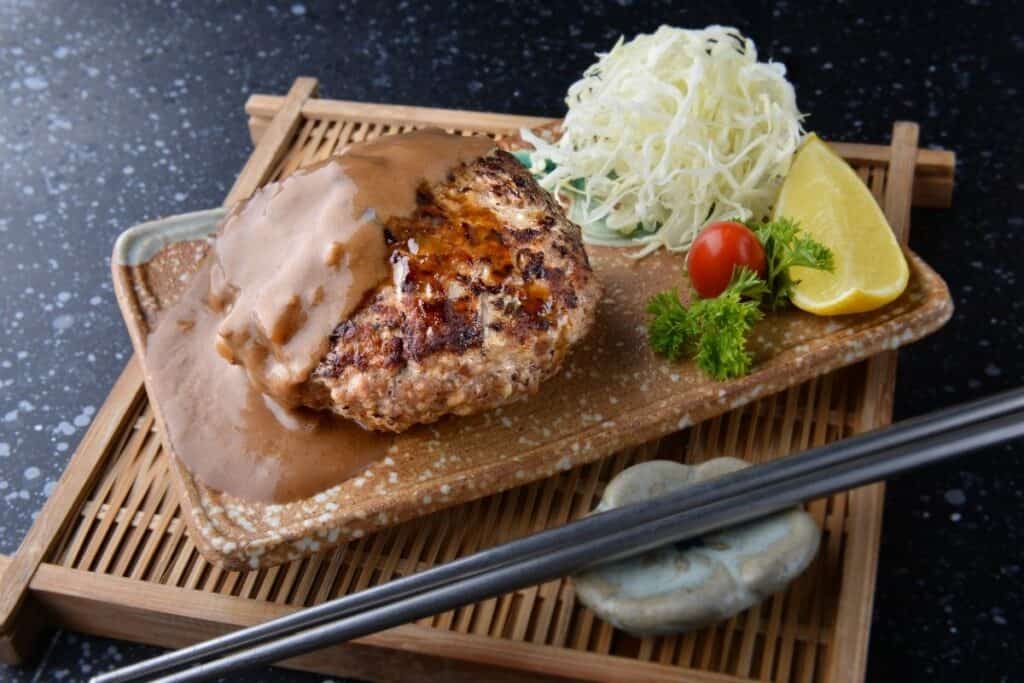
Omu-Raisu
Omu-raisu is a dish also known as omelet rice. It is similar to any ordinary omelet, but it is filled with rice, ketchup, and Worcestershire sauce.
This very tasty dish is often served for breakfast and lunch and is a choice for people both young and old.
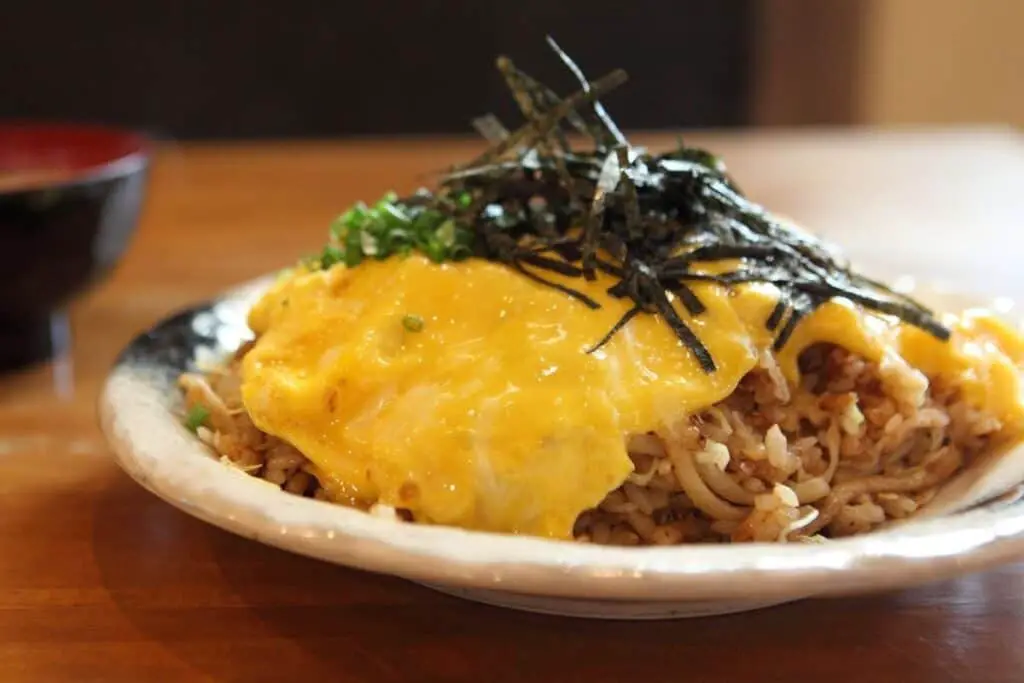
Okonomiyaki
Okonomiyaki is a Japanese-style pancake dish that is native to Osaka but can be found all over Japan. These pancakes are made with salted dough and cabbage.
The pancakes are usually served with toppings, such as mayonnaise, Worcestershire sauce, and fish flakes.
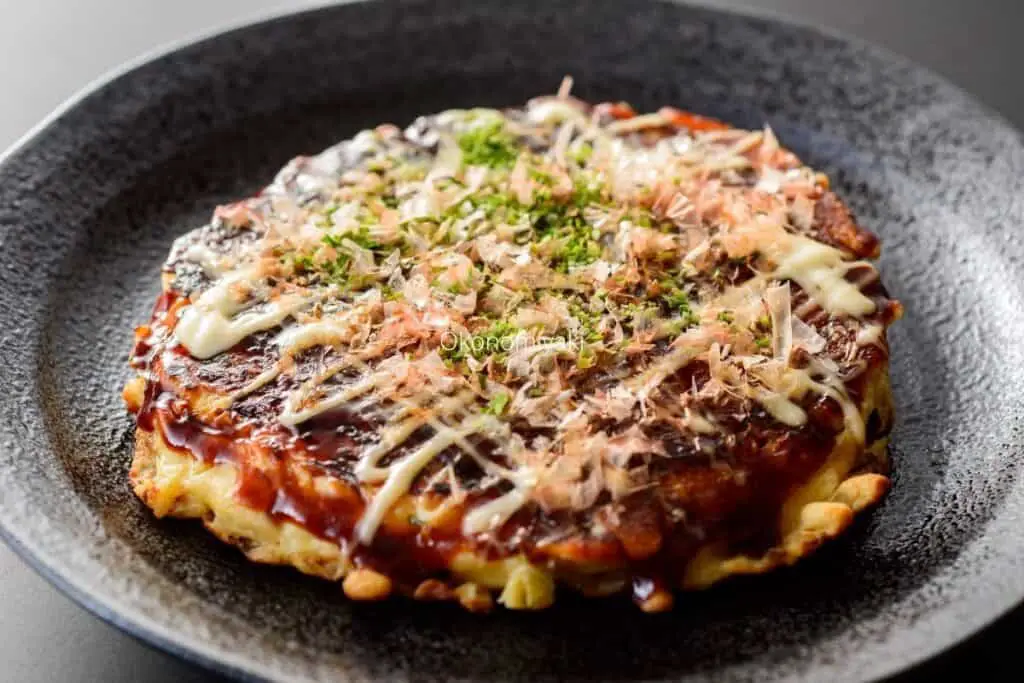
Matcha
Matcha is a type of green tea that is immensely popular in Japan and has also become a craze in other parts of the world. Many sweets in Japan are also flavored with matcha, so you can enjoy the intense flavor in more than just a hot cup of tea.
Matcha flavored ice cream is one delicious and satiating treat to enjoy while exploring the streets of Japan after a savory meal.
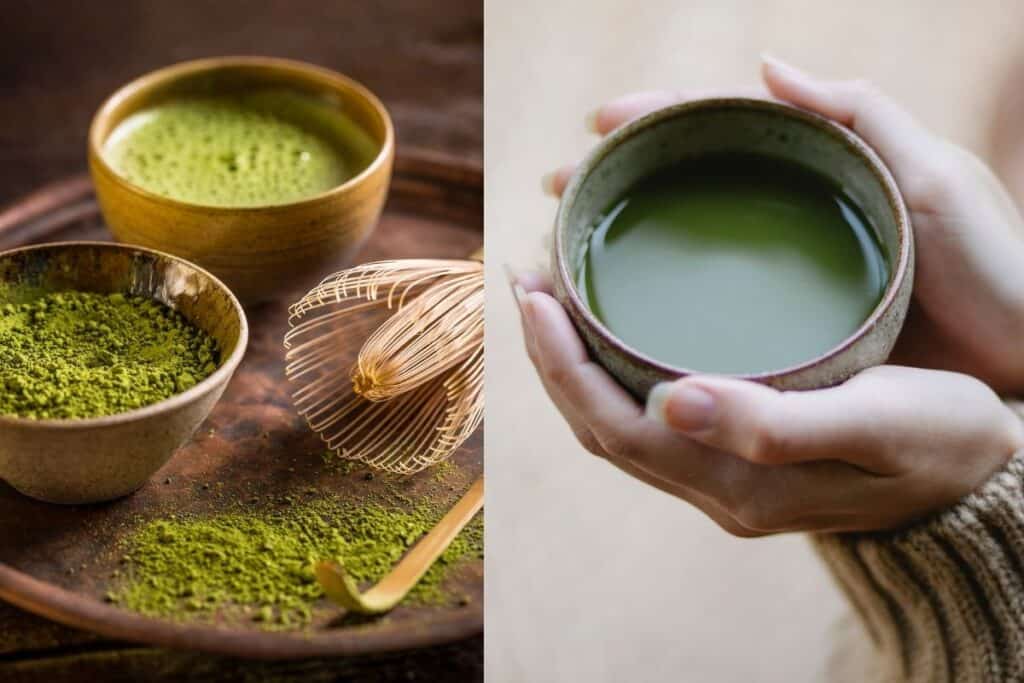
Manju
Manju is another Japanese dessert that you will find on many menus. It is considered a pastry, made with flour, rice powder, and buckwheat, with a sweet red bean paste filling. Chestnut jam is also sometimes used as a filling.
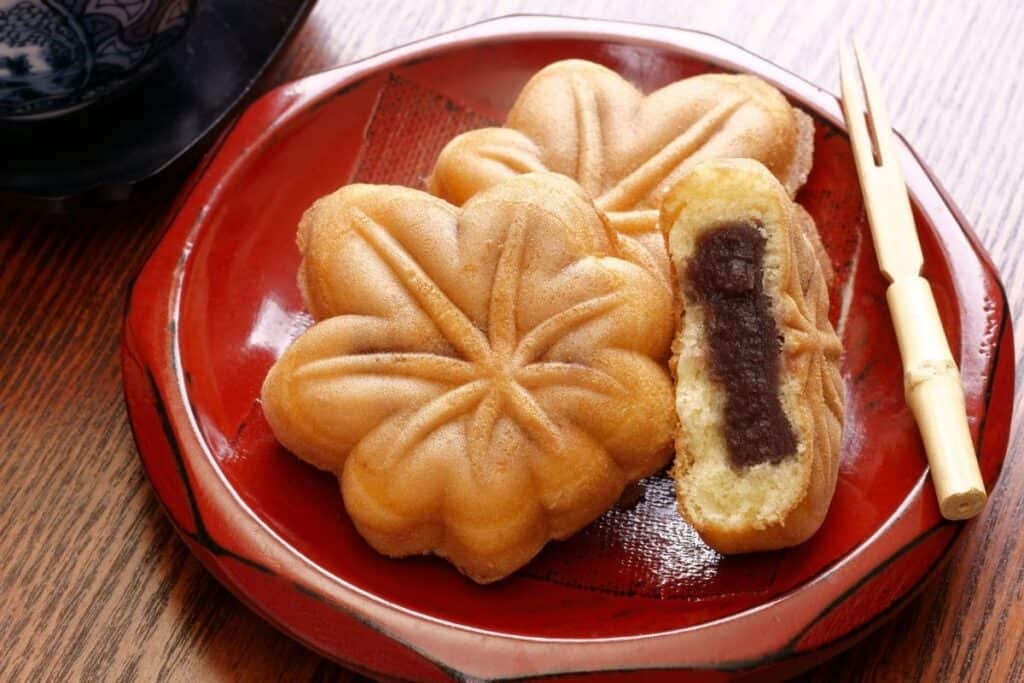
Why Is Japanese Cuisine So Popular Around The World?
Japan is a very health-conscious society, and they have been able to use their healthy staples to create a variety of dishes that are balanced, delicious, and satisfying.
They know how to create delicious food that feels indulgent but without unhealthy or overly processed ingredients.
Because of this, Japanese people have a higher life expectancy than most other countries.










